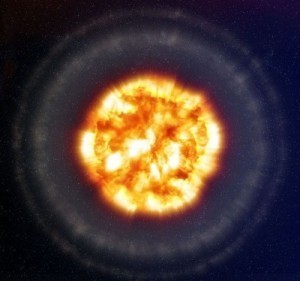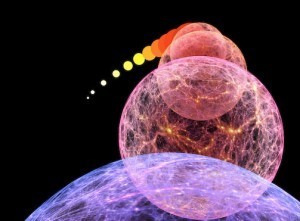The observable universe is billions of light years wide, and expanding in such a way that it’s difficult to even discuss its size in a simple way. As a result, it can be difficult to visualize the universe as a whole.
One popular representation is to show a kind of timeline, starting with the big bang, and showing the evolution of the universe from then to now. It’s a nice way to represent the time scale of the cosmos, but visualizing the shape is a bit more difficult. One way this can be done is to use a logarithmic scale. Perhaps the most famous use of this scale is the Charles and Ray Eames video Powers of Ten, which showed the universe at ever increasing and ever decreasing logarithmic scales.
If you map the universe on a logarithmic scale, then you can create an image of the cosmos with the Sun in the center and the cosmic microwave background as a bounding circle. It looks a bit like a pre-Copernican view, but that’s just a trick of logarithms. Rather than a linear scale, where each step away from the Sun is the same, if the first step is a light year, the second is ten light years, then a hundred, a thousand, and so on. With logarithms you can fit the entire universe on a meaningful scale.
The one big disadvantage of such an image is that it gives the impression of a “center” to the universe as well as an “edge.” The one advantage is that it clearly shows why we see the cosmic background radiation coming from all directions, and how looking deeper into the sky gives us a view of the early universe.
Any graphical representation of the cosmos will have strong and weak points, but a logarithmic view is a great way to show the universe in a nutshell.











